Jefferson Vineyards Wine Blog
Rodger Patzig, On Petit Verdot
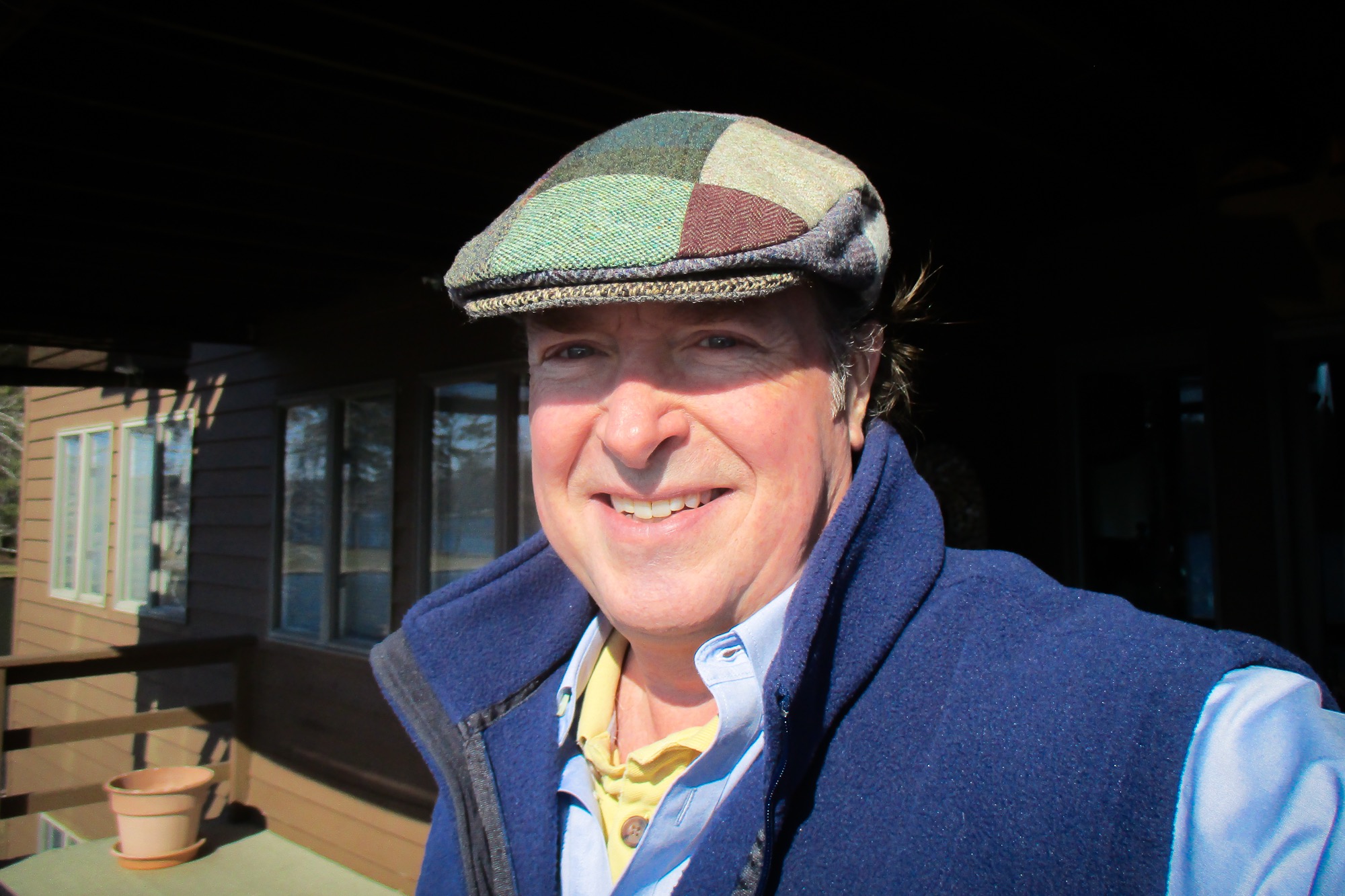
"Jefferson Vineyards has been a big part of my life for over 20 years. I have seen many changes and enjoy seeing how each wine changes from vintage to vintage. One of my favorite Virginia reds has been Petit Verdot, which Jefferson Vineyards has been producing for many years now. It is a red that I like to sip on alone or with some hearty foods. After opening Petit Verdot for a while, it softens and the rich dark fruit flavors are revealed. Recently, I opened a 2017 vintage and had it with some full-flavored cheese, it was a great pairing."
- Rodger Patzig, Tasting Room Ambassador
To celebrate our 40th Anniversary and enjoy our Limited February Release, click here.
In the Vineyard: February Pruning
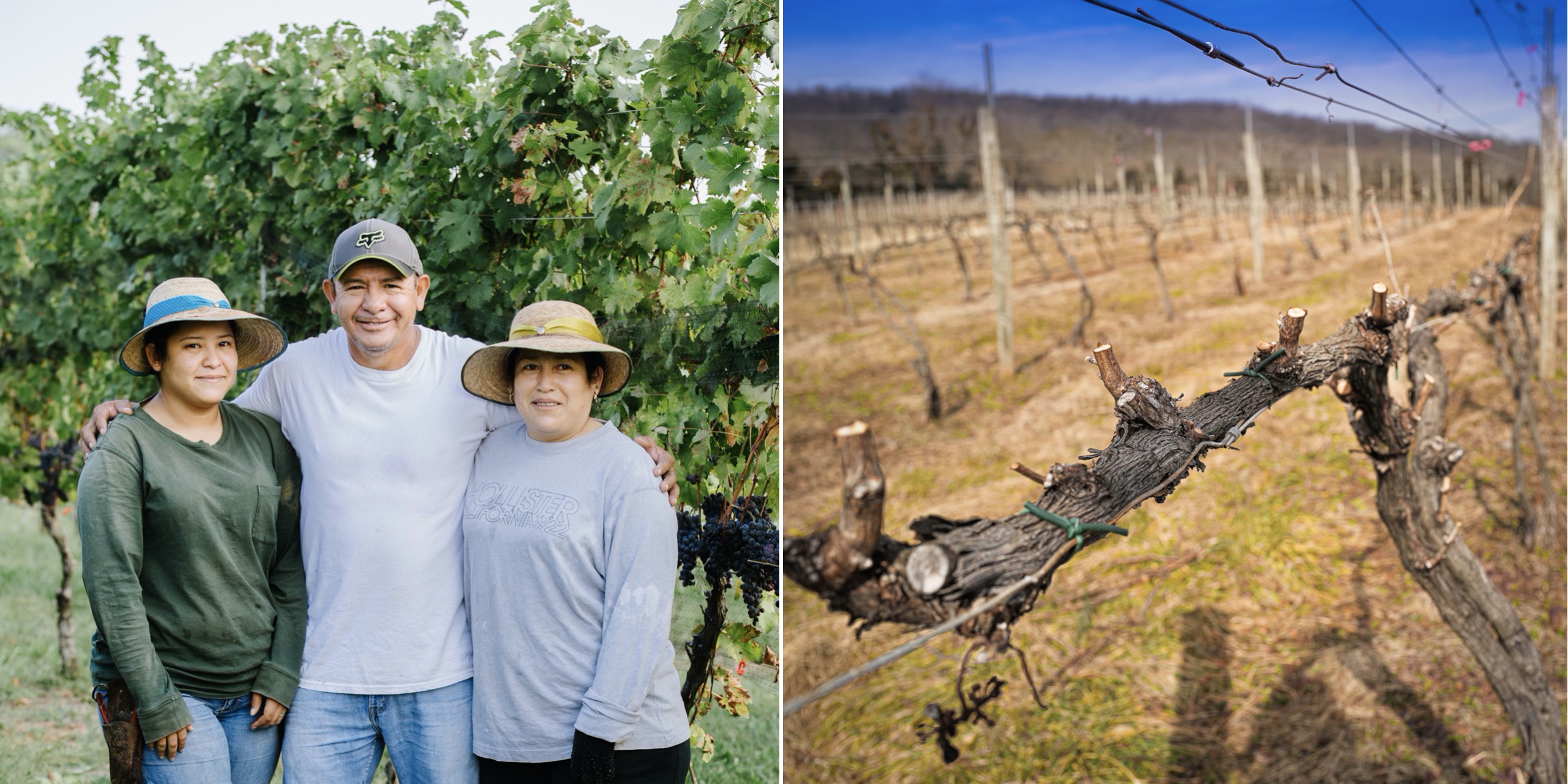
Hector Guzman and his family meticulously care for our vines each season. The Guzmans returned from Mexico earlier in February. Immediately, they began the final pruning in our Cabernet Franc vines. In this process, our team cuts back the canes from years prior, leaving only two or three buds closest to the cordon (the horizontal 'arms of the vines) that will best grow shoots. Our team typically prunes Cabernet Franc and other varietals before beginning work on early budding varietals, like Chardonnay. Such varietals are at greater risk of bud damage from late frosts. By pruning these vines last we delay bud break, better protecting them from early spring frosts.
Once the threat of frost has passed, the team will again return to the vines and remove all but the healthiest shoots from a single spur to improve air circulation in the vineyards.
Petit Verdot: Savor Something Special
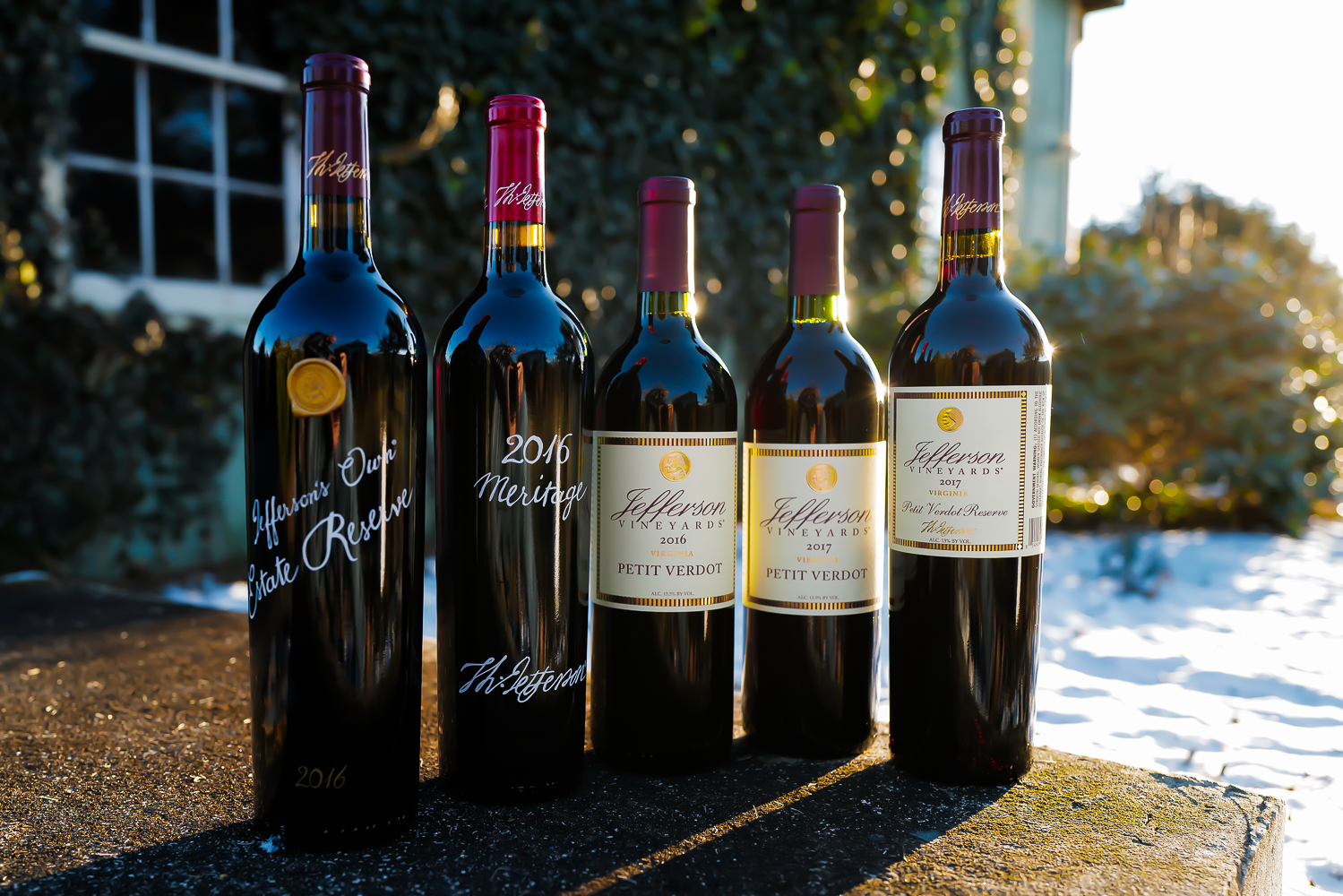
February, the last full month of winter. We face a mere handful of weeks until we can at last trust that the sun will shine. As we at Jefferson Vineyards approach our anniversary in the spring, there seems a no better time to move slowly, honey slow, and delight in the joys of these past forty years.
Valentine's Day in particular seems the day to celebrate all that we love. We of course will be celebrating our wines. Though there have been trials and tribulations over the years, none could undermine the beauty of watching our wines develop, the richness of each nuance unfolding in the glass. To savor this special time, we're filling our glasses with a bold and intricate red - Petit Verdot.
Now a darling of Virginia, Petit Verdot was known first as a blending grape from Bordeaux. We’ve loved this varietal from our beginning, grafting it as early as 1984 and bottling it in 2001 - making us one of the first in Virginia to do so.
If Viognier is the star of our white wines, Petit Verdot is our headlining red. To this day, you'll recognize Petit Verdot as a principal part of our portfolio. With it, we produce three wines: an Estate Reserve, a single varietal, and a reserve single varietal. Our Estate Reserve is not always made singularly from Petit Verdot, but when our estate's Petit Verdot fruit is undeniably perfect we cannot help but make an Estate Reserve to treasure this complex red. Our Meritage wines too manifest our adoration. Petit Verdot plays a uniquely prominent role in our Meritage program, frequently comprising the largest percentage of the blend, a blend distinct to Jefferson Vineyards.
Petit Verdot bursts with red fruit and offers a bright, balanced palate. Each iteration gives way to unique delicacies, the gems of which we've curated in our February Limited Release. Our 2017 vintage opens with caramel aromas that lead to blackberry and coffee flavors. The 2017 Petit Verdot Reserve is vibrant and oak-driven, offering plum and raisin flavors before finishing with tart cherry notes. Even our 2016 Estate Reserve (100% Petit Verdot), is distinct in its powerful spice and fig bouquet, plum on the palate, and notes of cedar in the finish.
Bold and tannic, Petit Verdot pairs equally well with red meats as it does with chocolate sweets. Should you find yourself searching for something more to savor in this final winter push, explore an iteration of Petit Verdot in our February Limited Release and delight in its details. Or perhaps you wish instead to relish in the process of taking your sweet time. For you, we've collected a decadent chocolate recipe from our beloved associate, Grandma Bond.
This February, we suggest you move slowly, make something, celebrating something, and savor something special.
Grandma Bond's Frosted Petit Verdot Brownies
For the Brownies
- 1 cup flour
- 2/3 cup unsweetened high-grade organic cocoa powder
- 1/2 tsp baking powder
- 1/2 tsp salt
- 3/4 cup unsalted butter melted
- 1/4 cup Jefferson Vineyards Petit Verdot
- 1 1/2 cup sugar
- 3 eggs at room temperature
For the Frosting (Optional)
- 1 cup unsalted butter, softened
- 3 1/2 - 4 cups powdered sugar
- 1/2 cup dry red wine
- 2 Tbs granulated sugar
Instructions for the Brownies
- Preheat the oven to 350°F. Spray a 9-inch baking pan with nonstick cooking spray.
- In a medium bowl, which together flour, cocoa powder, baking powder, and salt.
- Melt the butter in a medium bowl in the microwave for 30-second increments until the butter is fully melted. Whisk in sugar and Petit Verdot. Whisk in the eggs, one at a time.
- Fold the dry ingredients into the wet ingredients until fully mixed. Pour batter into the previously prepared pan. Bake for 25 - 30 minutes or until a toothpick can be inserted in the center of the brownies and come out dry with only a few crumbs.
- Allow brownies to cool completely.
Instructions for the Frosting
- Add the dry red wine and sugar to a small saucepan, stirring until the sugar is completely dissolved.
- Bring the mixture to a simmer, stirring occasionally. Continue simmering until reduced and is a syrup, thick enough to coat the back of a spoon. (You'll know its ready when stirring starts to form fleeting lines in the mixture, showing the bottom of the pan)
- Remove the skillet from heat; it should yield several tablespoons of syrup.
- With a standing mixer, cream together the powdered sugar and butter until whipped and fluffy. Set to a lower mixing speed and slowly pour in the red wine syrup, mixing until evenly combined.
- Fit your desired tip onto a piping bag and scoop the frosting in. You can also use a plastic baggy with one of the corners cut off.
- Generously frost each of the brownies. Serve and enjoy!
In the Vineyard: Rough Pruning
Throughout the year, our team works tirelessly to maintain and manage the vineyards in an effort to produce the best possible fruit. With each season, the focus of this care changes.
Were you to take a close look at our vines, you would see the trunk of each vine splits into two horizontal arms that grow along the trellis. Each of these arms is called a 'cordon' and on these cordons are 'spurs', small stubs containing 1-3 buds, that grow upwards and will eventually bear fruit. Since the beginning of December, our team has been rough pruning in the vineyard. Rough pruning is the process of trimming back the shoots of spur-pruned vines to about 12 to 15 inches above the cordon. This serves to expedite the final pruning process, by detangling and 'tidying' the vines our team can delay the final pruning and bud break, better protecting the vines from winter damage and spring frost.
Next week, we being the final pruning process!
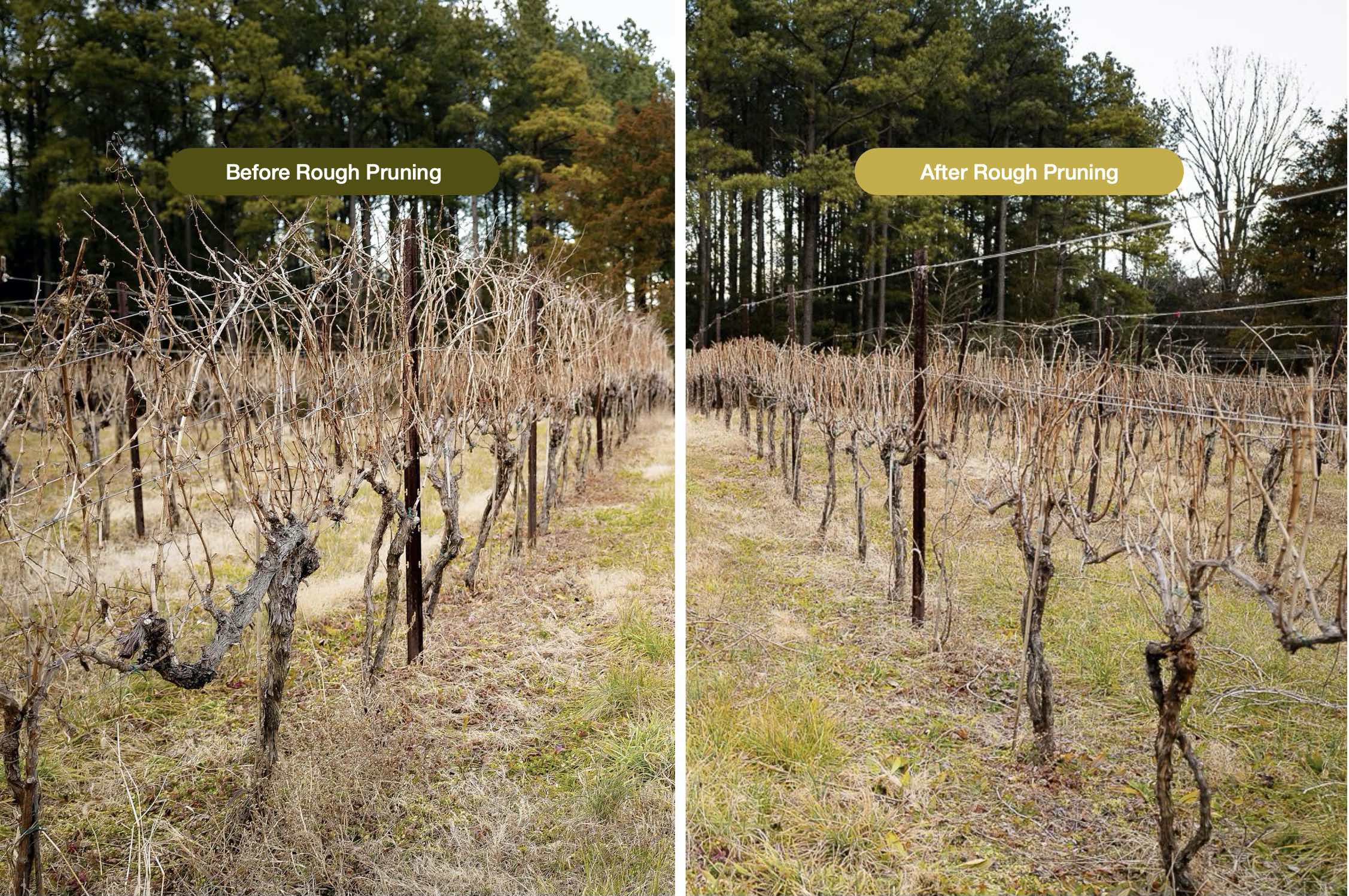
Christopher Ritzcovan, Our Winemaker

"I started working at Jefferson Vineyards in 2007. I was 24 and had just graduated from UVA the year prior. I stumbled across the Assistant Winemaker job on Craigslist and thought it would be a great experience before heading off to grad school. At the time, my wine knowledge consisted of little more than watching my Dad make wine in the garage, literally destemming individual clusters by hand, and then proudly sharing these bottles with my friends. After a year at JV, where I was able to take part in the full cycle of the winemaking/growing process, I left for architecture school. The endless days sitting through class, working in the studio, made me realize how much I missed and loved the winemaking process and the special connection it has with the land. Pruning in the freezing old, continually taming the wild growth of vines all summer, picking fruit in the fall, and then guiding its transformation into wine, these are all gifts of place... After school, I returned to the vineyard and have dedicated the last decade to the art of winemaking. I find the Estate Reserve wines that much more gratifying knowing the full effort that went into the process, from vine to bottle, and that the story unfolding in your glass will be unlike any other."
- Christopher Ritzcovan, Our Winemaker
To celebrate our 40th Anniversary and enjoy our Limited Releases, click here.
Terroir: A Connection to Place
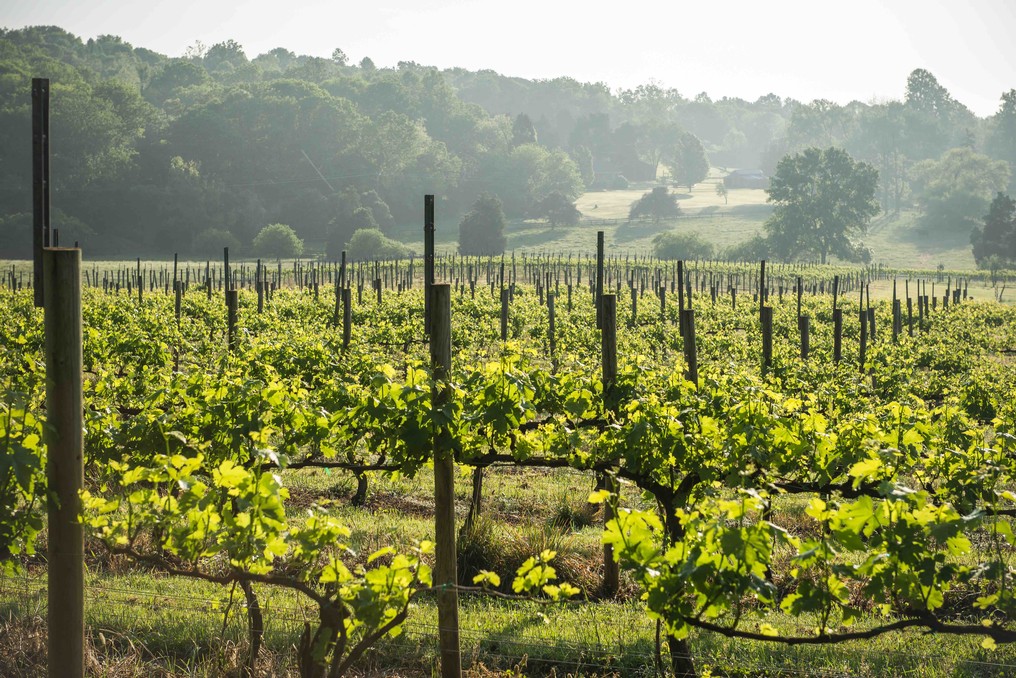
“Terroir”. You'll hear this word as our tasting room ambassadors detail the characteristics of the wine in your glass. Attila, our owner, may mention it while hosting a tour or private tasting. In truth, you'll hear it referenced at nearly every vineyard, or in every wine guide, book, or tasting.
Pronounced, “tare-WAHr”, this French term refers to the imprint a place leaves on a crop. For our purposes, it is the inextricable traits given to grapes by the area in which they are grown. With this term, one references the entirety of variables defined by a location and the consequential traits on the fruit. It is the nutrients a soil holds, the climate, the weather, at what elevation grapes are planted, what else grows beside the grapes, and how the land is cared for. Each will have an influence on the grapes, and ultimately, the wine.
The significance of this influence brands the location of a vineyard as - well, significant. Each grape variety has distinctly defined ideal conditions, and the uniqueness of every planted block within a vineyard will bear its mark. For this reason, we have carefully selected four separate plots of land on which to plant our vines, each chosen for its precise characteristics and each planted with particular grapes.
Our Upper Vineyard, for instance, was planted in 1981 on a rolling slope 608 feet above sea level. The slope of the land dictates how cold air will run off the vines, working to prevent frost. Rainwater too will rush down the angled land. The Viognier planted in the lower block grows on even steeper land. This results in drier soil, prompting the vines to stop their growth early, and though counterintuitive, produce high-quality Viognier fruit. While the Viognier planted in the upper left blocks tends to have more water in the soil, their proximity to the woods has kept them better protected from detrimental frost.
Even in the 1770s, as Tuscan viticulturist, Philip Mazzei, worked to establish the Virginia Wine Company on our present-day property, he took note of the land and climate as he monitored the vines’ growth. In a 1778 letter addressed from Colle, he described the growth of early vine cuttings and wrote that their success “prove in my humble opinion the superiority of this, either soil or climate, perhaps of both”. Though in its infancy relative to the centuries-old growing regions of Europe, the booming Virginian wine region and countless modern-day accolades stand as a testament to Mazzei’s early, glowing assessment.
Tasting food from another place is to step momentarily into a culture, a tradition, or simply a place other than that which you describe as ‘home’. The relationship of place to the final product is magnified in a glass of wine. From color, to aroma, to finish, wine too catalogs a place. What rolling hills, what sun the seasons drank, what flora too grows - all can be sensed.
In celebration of our forty-year anniversary and our varied terroir, our winemaker has curated a special selection of wines that best reflect the distinct differences of our land and climates. So, as you enjoy a glass of our beautifully aged Estate Reserve wines, or savor a sip of Riesling, or Malbec, what you taste is an expression of origin, a connection to a place. To celebrate this connection with us, please visit our Monthly Limited Release page.
Looking Forward - A Letter From Our Owner
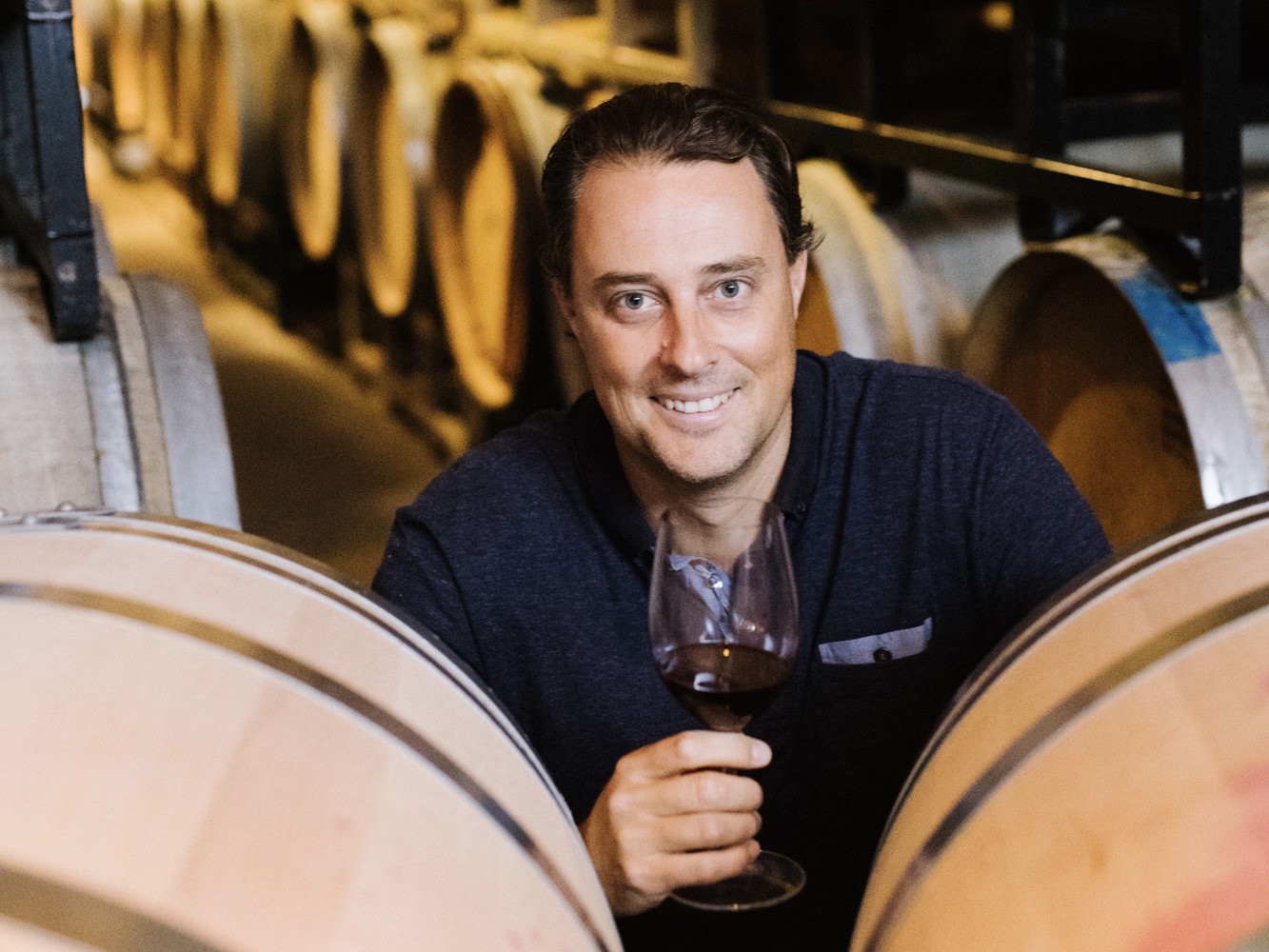
Dear Friends,
What a rollercoaster year we’ve had! Yet here we are, with an end in sight. We look forward to 2021 with hope and, of course, some delicious wines.
The year ahead represents a special milestone for us as 2021 marks our 40th Anniversary. The early days of Virginia wine were challenging. We learned through trial and error, we labored to determine which vine varietals would accept our land and which would not. Today’s wineries are blessed with the knowledge of years past. Today, we can leverage satellites and soil samples to determine which grape varietals will flourish in one plot of land, versus another. Just like that! Incredible! No such luxuries existed in 1981. Those were the pioneering days of the Virginia wine movement, days we remember fondly.
My grandparents started this venture in 1981 with the goal of creating wine to share with family, friends, and guests. As diplomats setting into a new life, wine was central to the conversations they had around the dinner table. In establishing a vineyard, they sought to make a wine of their own, a wine to serve and enjoy with whoever joined them at the table. They knew and appreciated the viticultural history of this land, and with the talented Gabriele Rausse, our first winemaker, we planted our first acres of vines.
Like my grandfather, my father too was educated in France and deeply appreciative of old-world wines. In 1993, he and his French wife took the reins of Jefferson Vineyards. Over the course of their twenty-years here, they both focused on improving our wine’s quality with the help of now renowned winemakers. First, they flew North to convince Michael Shaps to relocate to Virginia. Michael became our second winemaker and was succeeded by the French, Frantz Ventre. In my parents’ last decade, they hired the talented Andy Reagan. Each winemaker, in his own style, improved our wines and left an indelible mark on our winery.
2013 ushered in yet another new chapter for Jefferson Vineyards. My siblings and I, the third generation of Woodward’s, stood at the helm. We were incredibly lucky to join years after Jefferson Vineyards’ reputation had been cast but there was much work to be done. We strove to improve and expand: a new tasting room, a new deck, new gardens, new patios, and an expanded parking space. Our current winemaker, Chis Ritzcovan, and Assistant Winemaker, David Woodside, worked tirelessly on our Viognier wine program. Years later, it now stands as one of Virginia’s most highly awarded Viogniers, vintage after vintage. As it is the state grape of Virginia, we are deeply humbled by this honor.
In all of these endeavors, we were never alone. They say a rising tide lifts all boats, and so it is with other Virginia wineries. Together, we have vastly advanced Virginia’s reputation as an extraordinary wine region. Together, we are making wines that rival any of the best in the world.
In reflecting on how far we have come in these near forty years, I am most proud of Jefferson Vineyard’s unwavering commitment to producing quality wines, created to be shared together with friends, family, and guests.
In January, we will begin sharing a special blog each month to celebrate our rich history, wine programs, and our land. These stories will continue in our originating tradition, evoking the dinner table conversations of my grandparents and parents before me, each of whom believed wine is best enjoyed together.
As we look optimistically towards 2021, I express my immense gratitude to all of you who supported us this year. I am impressed by the talent of all our employees and our tasting room team who did their utmost to keep everyone safe with decorum and warmth. We could not have gotten through 2020 without your help.
Thank you, and merry holidays!
Sincerely,
Attila Woodward
A Wine For Every Thanksgiving

Perhaps this Thanksgiving your family’s, generations old, sworn secret, sweet potato pie recipe will again grace the table. Perhaps this is the year to break from tradition, embarking on a culinary exploration into an untested recipe, or dare I say it, the year you make ham - not turkey. This holiday season may be unlike any other, but it need not keep us from enjoying good food and great wine as we take a day to be thankful.
For a Classic Thanksgiving
Golden brown turkey, roasted fall vegetables, gravy, stuffing - the plethora of flavors in a traditional Thanksgiving meal can make wine pairings tricky. Yet, this complexity creates room for experimentation. You might pair different wines for different courses. For instance, our Riesling 2019 with lavender, clove, and coriander on the nose and a vibrant acidic finish would pair beautifully with a light first course or could be served as an aperitif. This could be followed by a softer medium-bodied red, like our Cabernet Franc 2019, characterized by its dark cherry and vanilla aromas, dark fruit on the palate, and a balanced acidity.
Our Chardonnay Reserve 2018, which received a Silver Award from the 2020 Virginia Governor’s Cup, has rich oak and vanilla notes greeted with green apple and pear flavors and a balanced, elegant finish. This pairs well with light meats, like Turkey, and roasted vegetables making it an equally fine choice to accompany a classic Thanksgiving meal. For those who prefer less oaky Chardonnays on Thanksgiving, our stainless steel aged Chardonnay 2018, offers a lively and expressive palate with citrus fruit on the nose, and a bright acidic finish that pairs nicely with oyster dressing.
For a Fried Turkey
Those who choose to stay true to the turkey tradition but opt to fry versus roast may too want to veer from the above wine pairings. The flavors offered by the frying process are best balanced against a rose wine. Our Semi-Sweet Rose 2018 bursts with ripe cherry and berry flavors and finishes semi-sweet, per the name, with a hint of tannin and would set wonderfully against the salt and juiciness of your fried bird. The drier Rose 2018, with fresh strawberries on the nose, a bright and refreshing palate, and a dry finish would also cut the salt and fat of a fried turkey.
For a Turkey-less Thanksgiving
Though most enjoy turkey on Thanksgiving, many choose otherwise. What wine you open will ultimately depend on what meat you serve. If ham is your preference, either the floral aromas and smooth finish of the Cabernet Franc 2019 or the bright acidity of our Chardonnay 2018 will compliment your main course. If you prefer to serve lamb or a rich beef cuts, try the Meritage 2018; a Bordeaux-style blend with aromas of oak, cedar and vanilla, a smooth palate integrated with bright fruits, and a creamy finish.
For a Meatless Thanksgiving and Vegetable Fanatics
Roasted root vegetables are best offset by our Vin Rouge 2018, a light-bodied and fruit-forward red with soft tannins and a velvety finish. This wine works especially well with sweet potato-based dishes, be they roasted, pureed, or casseroled. If you like your veggies green, roasted asparagus, and a host of sauteed greens pair wonderfully with both the Riesling 2019 and Chardonnay 2018 as these wines add a touch of citrus to the dish.
As you choose between the solace of a tried and tested menu or venture beyond tradition, said simply - there is a wine for that.

